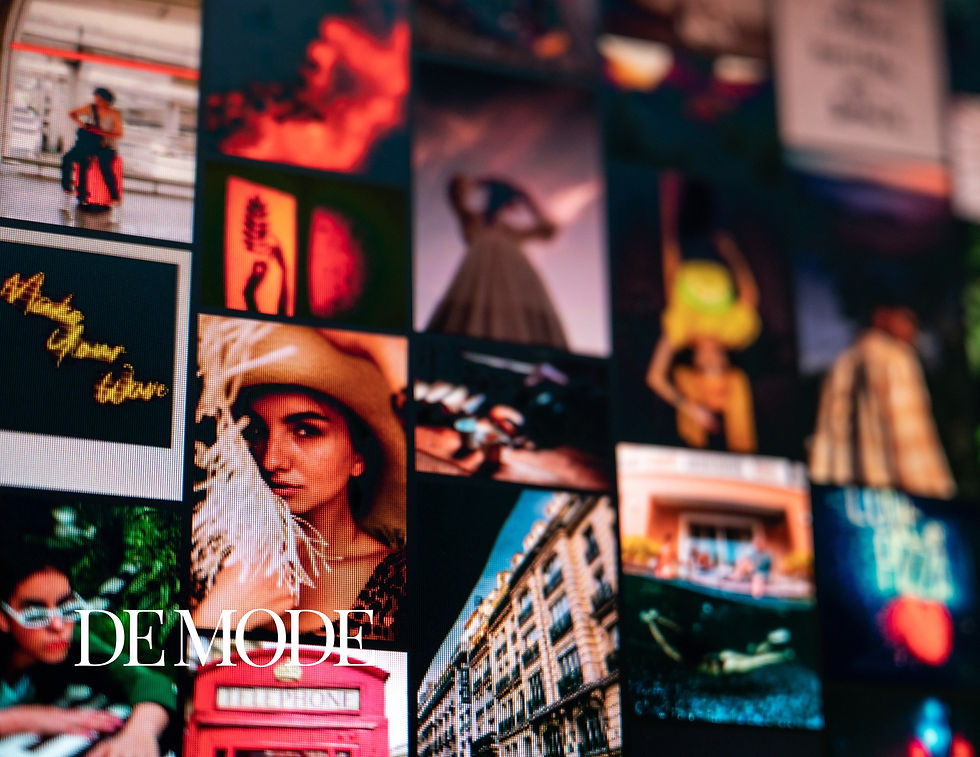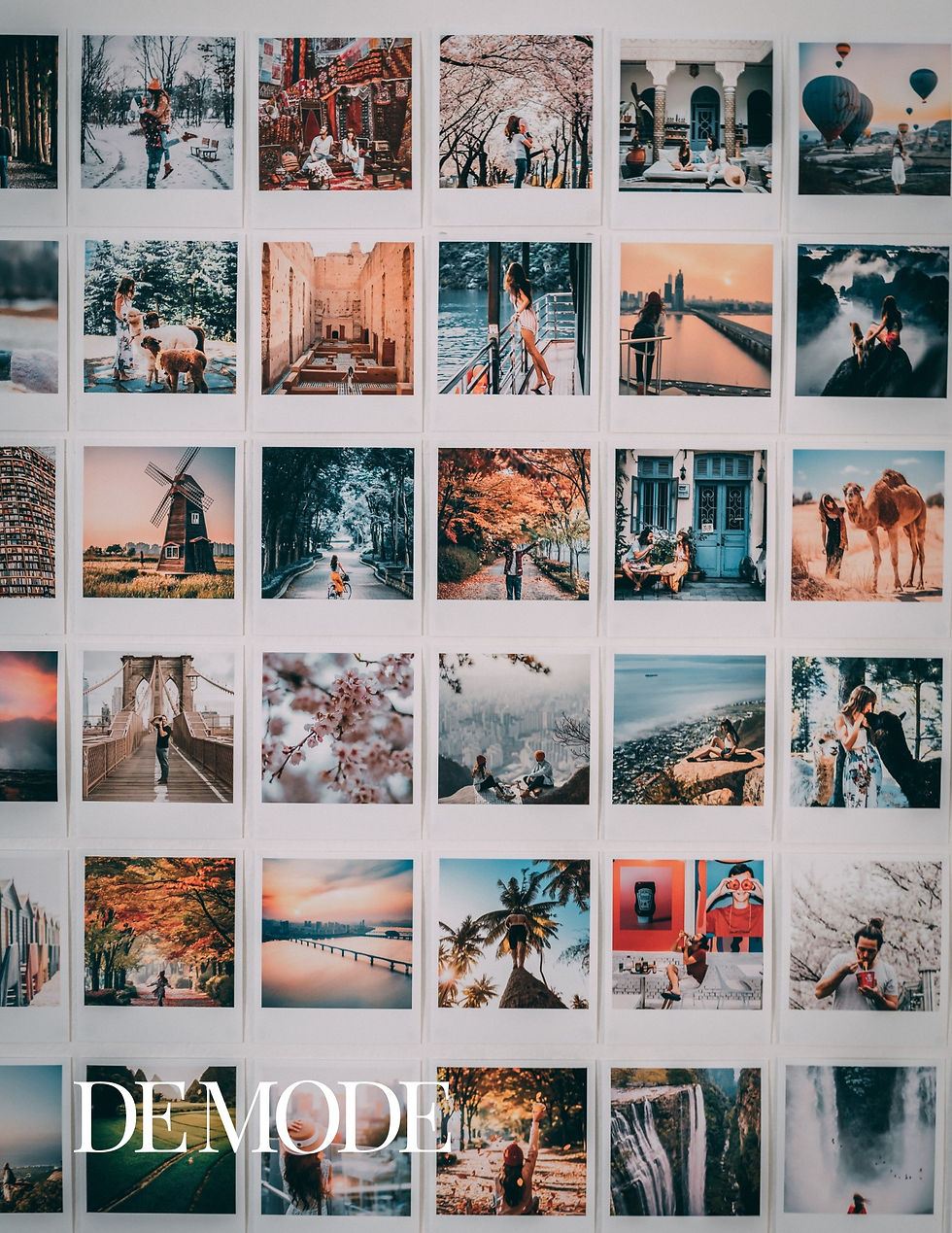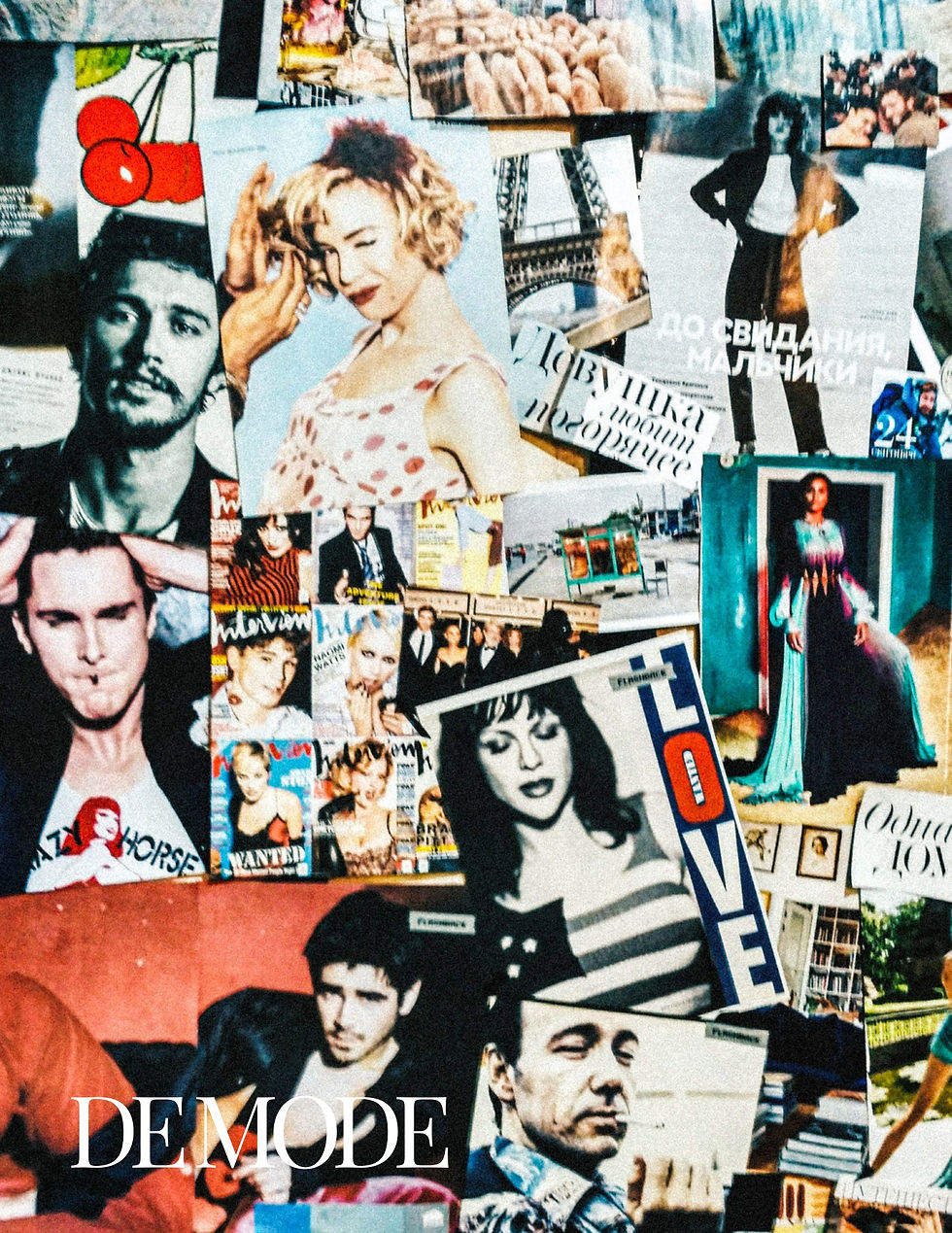ORIGINALLY PUBLISHED IN DE MODE
Article Published on: 09TH AUG 2023 | www.demodemagazine.com
In the realm of artistic expression, the concept of "mixed media" opens a door to a world of endless possibilities, where various materials, textures, and forms converge to create captivating and multidimensional works. At the heart of this creative tapestry lies the art of collages, a technique that ingeniously fuses disparate elements into a harmonious whole. Collages, often celebrated for their ability to challenge conventions and evoke powerful emotions, have evolved into a vibrant and dynamic genre that pushes the boundaries of traditional art forms.
The Genesis of Collage: A Creative Revolution The roots of collage art can be traced back to the early 20th century, when artists such as Pablo Picasso and Georges Braque began to experiment with the concept of incorporating found objects and materials into their paintings. The groundbreaking movement of Cubism, characterized by its fragmented and multidimensional approach to representation, played a pivotal role in laying the foundation for collage art. Picasso's innovative work "Still Life with Chair Caning" (1912) is often considered one of the earliest examples of a true collage, where elements of a chair caning are seamlessly integrated into the canvas.

Beyond Traditional Boundaries: The Essence of Collage At its core, collage is an art form that thrives on juxtaposition and contrast. It challenges the conventional notion of a singular medium or technique by encouraging artists to explore a diverse range of materials, such as photographs, magazine clippings, fabric, wood, and even three-dimensional objects. This interplay of elements adds a tactile and sensory dimension to the artwork, allowing viewers to engage on multiple levels.
Collage artists are adept at blurring the lines between reality and imagination. They possess the ability to weave narratives that transcend the boundaries of time and space. By seamlessly integrating fragments of the past into the present, they create visual dialogues that explore themes of memory, identity, and cultural significance. This skillful manipulation of materials and imagery enables artists to evoke emotions and provoke introspection in ways that traditional mediums often struggle to achieve.
The Art of Assemblage: A Kinship with Found Objects Collage art often shares a symbiotic relationship with the practice of assemblage, which involves the assembly of disparate objects into a single, unified composition. Assemblage artists, like collage artists, possess a keen eye for repurposing and recontextualizing objects, imbuing them with new meanings and narratives. The work of influential assemblage artist Joseph Cornell, renowned for his intricate shadow boxes that evoke a sense of nostalgia and mystery, exemplifies the fusion of storytelling and artistic craftsmanship.

From Analog to Digital: Collage in the Modern Age While the foundations of collage lie in the tactile manipulation of physical materials, the digital age has introduced new dimensions to this art form. Digital collage artists harness the power of technology to seamlessly merge digital images, graphics, and textures into intricate compositions. The digital realm offers artists a limitless array of possibilities, allowing for the creation of surreal and otherworldly landscapes that challenge the constraints of the physical world.
Digital collage has also democratized the art form, enabling artists to reach global audiences through online platforms and social media. This democratization has sparked a renaissance in collage art, as artists from diverse backgrounds and cultures find a medium through which to share their unique perspectives and narratives.
A Tapestry of Expression: Collage as Personal and Political Statement Collage art has proven to be a potent vehicle for personal and political expression. Artists often use the medium to address social issues, challenge norms, and critique power structures. The fragmentation and reassembly of images can symbolize the complex and multifaceted nature of contemporary society. Collage becomes a means of deconstructing and reconstructing reality, inviting viewers to question their assumptions and confront uncomfortable truths.
Furthermore, collage art serves as a powerful tool for reclaiming narratives and celebrating cultural heritage. Artists can use found materials, ancestral images, and symbols to weave stories that honor their roots and challenge historical erasure. Collage becomes a vessel through which marginalized voices can assert their presence and reshape dominant narratives.

The Enduring Allure of Collage Art As the artistic landscape continues to evolve, collage remains a steadfast and alluring genre that invites both creators and viewers to explore the boundaries of imagination. The very act of assembling fragments into a coherent whole mirrors the human experience itself—full of complexities, contrasts, and unexpected harmonies. Whether through tactile manipulation or digital wizardry, collage art demonstrates the enduring power of creativity to transcend traditional boundaries and forge connections that resonate across time, cultures, and mediums. In a world where art is a tapestry of diverse influences and perspectives, collage stands as a testament to the boundless potential of human ingenuity.